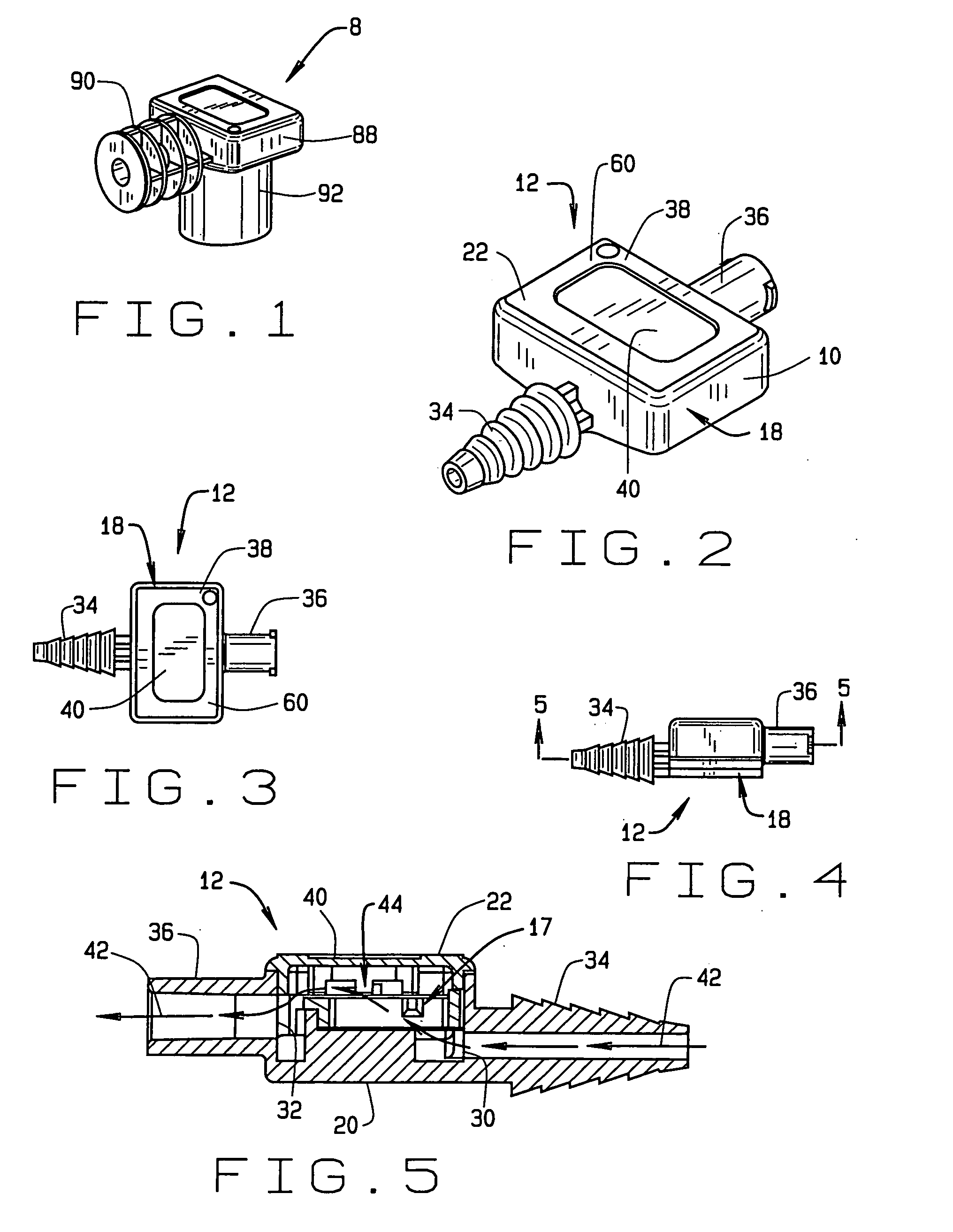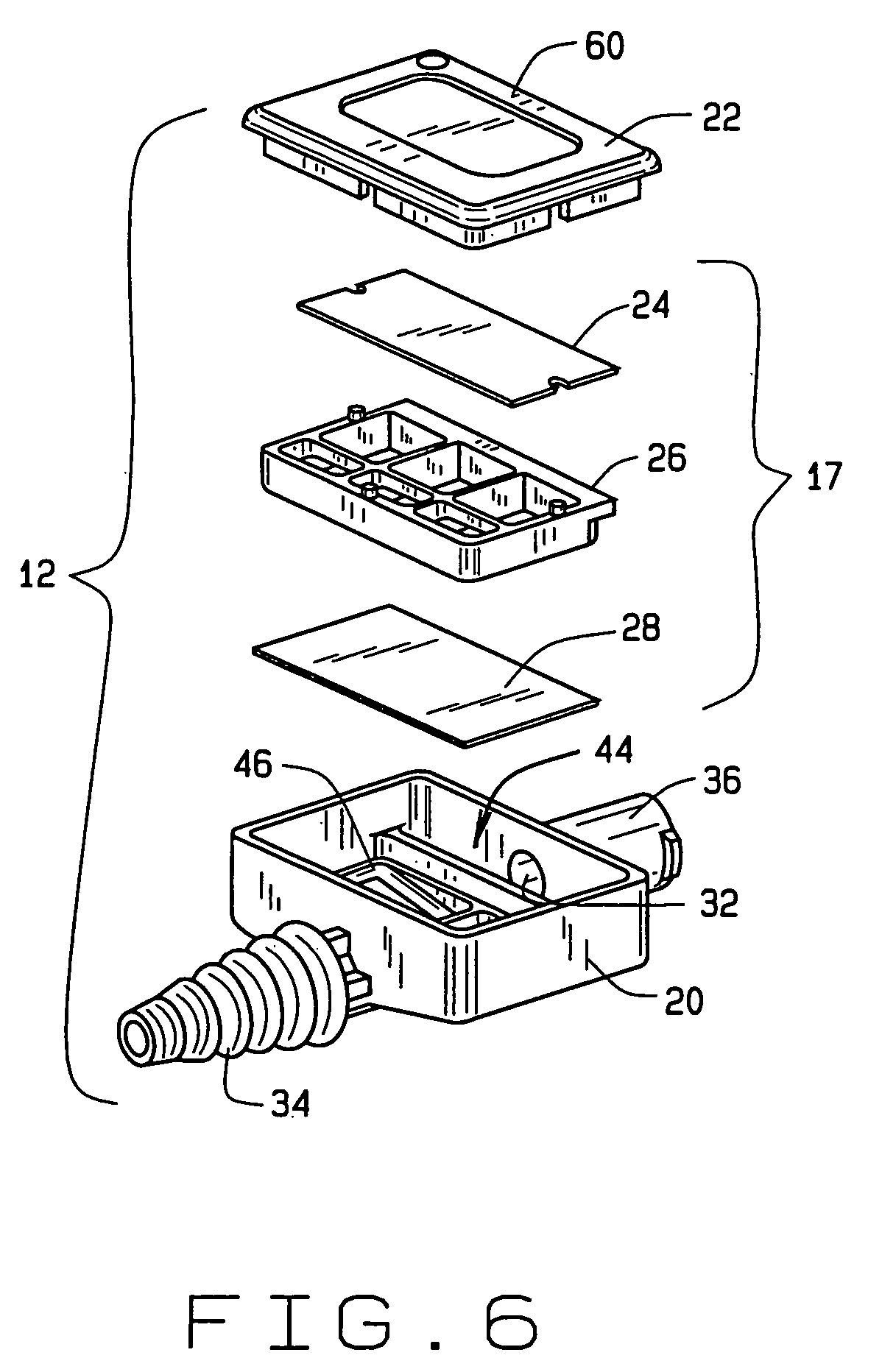Gastric tube placement indicator
a gastric tube and indicator technology, applied in the field of medical devices, can solve the problems of affecting the patient's respiratory system, affecting the patient's health, and affecting the patient's breathing, and causing the patient to suffer from a large amount of pain, and the time-consuming and labor-intensive nature of fluoroscopy and chest x-rays. disadvantages, and relatively expensiv
- Summary
- Abstract
- Description
- Claims
- Application Information
AI Technical Summary
Benefits of technology
Problems solved by technology
Method used
Image
Examples
Embodiment Construction
[0021] Referring to the drawings, a gastric tube placement device according to the present invention is illustrated and generally indicated as 10 in FIGS. 2-8. The gastric tube placement device 10 comprises a carbon dioxide (CO2) indicator 12 that encases a CO2 detector 17 in communication with a conventional Y-port connector 16 engaged to a gastric tube 14 for detecting the presence of carbon dioxide from a patient.
[0022] Referring to FIGS. 2-4, the CO2 indicator 12 comprises a rectangular housing 18 that encases the CO2 detector 17 for the detection of carbon dioxide that may enter the detector 17 when the gastric tube 14 is placed inside the patient. The housing 18 consists of a lower housing 20 engaged to an upper housing 22 that collectively defines a passageway 44 adapted to receive the CO2 detector 12 axially disposed therein. The housing 18 includes opposing first and second ports 30 and 32 wherein first port 30 is in communication with a barbed connector 34 for connection ...
PUM
 Login to View More
Login to View More Abstract
Description
Claims
Application Information
 Login to View More
Login to View More - R&D
- Intellectual Property
- Life Sciences
- Materials
- Tech Scout
- Unparalleled Data Quality
- Higher Quality Content
- 60% Fewer Hallucinations
Browse by: Latest US Patents, China's latest patents, Technical Efficacy Thesaurus, Application Domain, Technology Topic, Popular Technical Reports.
© 2025 PatSnap. All rights reserved.Legal|Privacy policy|Modern Slavery Act Transparency Statement|Sitemap|About US| Contact US: help@patsnap.com



